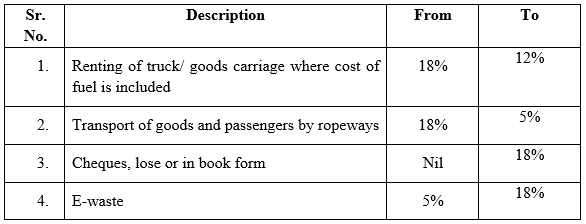Supreme Court: NCLT/NCLAT should not sit in appeal over commercial wisdom of the CoC to allow withdrawal of CIRP
The Hon’ble Supreme Court (“SC”) has in its judgment dated June 3, 2022, in the matter of Vallal RCK v. M/s. Siva Industries and Holdings Limited and Others [Civil Appeal Nos. 1811-1812 of 2022], held that the NCLT/NCLAT should not sit in appeal over commercial wisdom of the Committee of Creditors (“CoC”) to allow withdrawal of the Corporate Insolvency Resolution Process (“CIRP”).
Facts
IDBI Bank Limited had preferred an application under Section 7 of the Insolvency and Bankruptcy Code, 2016 (“Code”) for initiating the CIRP of M/s. Siva Industries and Holdings Limited (“Corporate Debtor”) before the National Company Law Tribunal, Chennai (“NCLT”). On July 4, 2019, the NCLT admitted the aforesaid application and the CIRP of the Corporate Debtor was initiated. M/s Royal Partners Investment Fund Limited submitted a resolution plan before the CoC of the Corporate Debtor. However, the aforesaid resolution plan could not be approved by the CoC of the Corporate Debtor as it could not meet the requirement of receiving 66% voting share.
Thereafter, the resolution professional preferred an application under Section 33(1)(a) of the Code for seeking initiation of the liquidation process of the Corporate Debtor. Further, the promoter of the Corporate Debtor (“Appellant”), preferred a settlement application before the NCLT showing willingness to offer one-time settlement plan and seeking necessary directions to the CoC to consider the terms of the settlement plan. The settlement plan was considered and deliberated by the CoC of the Corporate Debtor during the course of the 13th, 14th and 15th meetings of the CoC. After several rounds of deliberations, the final settlement plan was put up for voting in the 16th CoC meeting held on January 18, 2021 when the settlement plan received only 70.63% votes as against the minimum requirement of 90% voting share as contemplated in Section 12A of the Code.
However, subsequently, International Assets Reconstruction Company Private Limited (“IARCL”) holding a voting share of 23.60% decided to approve the settlement plan and informed about it to the resolution professional. Hence, pursuant to the approval of IARCL, the settlement plan came to be approved by more than 90% of the CoC in terms of their respective voting share. Accordingly, pursuant to the approval of IARCL, the resolution professional preferred an appropriate application seeking necessary directions from the NCLT. In view thereof, on March 29, 2021, NCLT directed the resolution professional to reconvene a meeting of the CoC. Subsequently, in the 17th CoC meeting held on April 1, 2021, the settlement plan was approved by the CoC with a voting percentage of 94.23%. Accordingly, the resolution professional preferred an application before the NCLT for seeking approval of the settlement plan which was already approved by the CoC.
However, on August 12, 2021, the NCLT passed an order dismissing the above-mentioned application seeking approval of the settlement plan and observed that it was not a settlement simpliciter under Section 12A of the Code but a “Business Restructuring Plan”. Further, on the same day, the NCLT passed another order thereby initiating the liquidation process of the Corporate Debtor.
Being aggrieved by both the above-mentioned orders passed by the NCLT on August 12, 2021, the Appellant preferred two appeals before the National Company Law Appellate Tribunal, Chennai (“NCLAT”). However, the NCLAT dismissed both the appeals by a common judgment pronounced on January 28, 2022.
Aggrieved by the judgment dated January 28, 2022 pronounced by NCLAT, the Appellant approached the SC. On March 11, 2022, the SC issued a notice upon the respondents and granted stay on the judgment dated January 28, 2022 pronounced by the NCLAT.
Before the SC, there was no representation made on behalf of the Corporate Debtor, whereas the resolution professional of the Corporate Debtor submitted that he does not wish to contest the matter. However, since an important question with regard to the interpretation of Section 12A of the Code arose for consideration, the SC deemed it appropriate to decide the issue involved in the matter.
Issue
Whether the adjudicating authority or appellate authority can sit in appeal over the commercial wisdom of the CoC.
Arguments
Contentions raised by the Appellant:
The Appellant submitted that it is trite law that the adjudicating authority or appellate authority cannot sit in appeal over the commercial wisdom of the CoC. As such, NCLT and NCLAT, both have grossly erred in rejecting the settlement plan and withdrawal of CIRP, considering that the settlement plan was approved by 94.23% of the CoC in terms of voting share.
The Appellant further submitted that one of the main objects of the Code is allowing the Corporate Debtor to continue operating as a going concern as well as paying the dues of the creditors to the maximum extent possible. As such, the judgment dated January 28, 2022 passed by the NCLAT and both the orders dated August 12, 2022 passed by the NCLT are against the spirit and object of the Code.
Observations of the Supreme Court
The SC made reference to the Report submitted by the Insolvency Law Committee (“Committee”) submitted on March 26, 2018, which had, inter alia, recommended for inclusion of a provision in the Code for withdrawal of application for initiation of CIRP admitted by the Adjudicating Authority, wherein it was recommended that such an exit should be allowed provided the CoC approves the same by 90% voting share. In view of such recommendation by the Committee, Section 12A was introduced in the Code by way of the Insolvency and Bankruptcy Code (Second Amendment) Act, 2018. Accordingly, Regulation 30A (which deals with “Withdrawal of application”) was introduced into the Insolvency and Bankruptcy Board of India (Insolvency Resolution Process for Corporate Persons) Regulations, 2016 by way of notification dated July 25, 2019.
The SC further relied upon its observations made in the case of Swiss Ribbons Private Limited and Another v. Union of India and Others [(2019) 4 SCC 17] wherein it was observed that Section 12A of the Code passes the constitutional muster. Thereafter, the SC relied upon a plethora of landmark decisions passed by it in previous judgments wherein it has been consistently held that the commercial wisdom of the CoC has been given paramount status without any judicial intervention for ensuring completion of the CIRP process within the timelines prescribed by the Code, notwithstanding that majority of those decisions are in the context of approval of resolution plan. However, the underlying principle remains the same that the commercial wisdom of the CoC is paramount.
The SC further observed that in various CoC meetings of the Corporate Debtor, the members of the CoC had widely deliberated on the issue of settlement and the fact that, one of the creditors namely IARCL, who had initially opposed the settlement plan but subsequently decided to support it, substantiates that the decision of the CoC to approve the settlement plan has been taken after sufficient discussion and deliberation on the pros and cons of the settlement plan.
Decision of the Supreme Court
In view of the above-mentioned observations, the SC allowed the appeal, quashed and set aside the judgment dated January 28, 2022 passed by the NCLAT and both the orders dated August 12, 2021 passed by the NCLT and allowed the withdrawal of CIRP of the Corporate Debtor.
VA View:
The SC has rightly observed that when 90% or more of the creditors, in their wisdom after due deliberations, arrive at the conclusion that it will be in the interest of all the stakeholders to permit settlement and withdrawal of CIRP, the adjudicating authority or the appellate authority cannot sit in appeal over the commercial wisdom of the CoC, unless it is observed that the decision of the CoC is capricious, arbitrary, irrational and de hors the provisions of the statute or the rules.
In fact, the SC has reaffirmed the supremacy of commercial wisdom of the CoC time and again in a plethora of judgments. As such, it is high time that the adjudicating authority and the appellate authority keep minimal judicial interference and allow a company to undergo CIRP smoothly as per the commercial wisdom of the CoC.
For any query, please write to Mr. Bomi Daruwala at [email protected]






